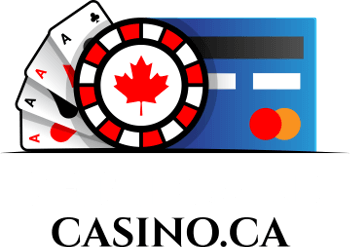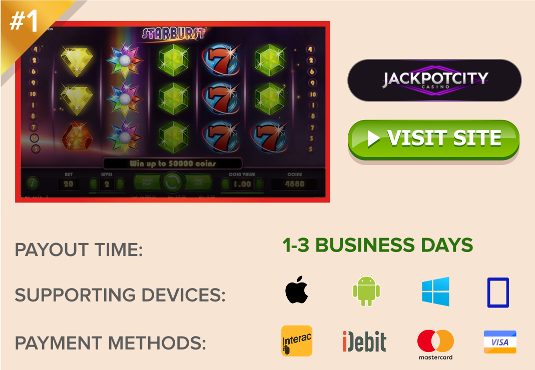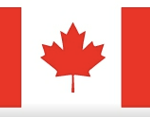How to Play Deuce to Seven Like a (Low) Baller
 Deuce-to-Seven Triple Draw is not your average poker game. Based upon classic Draw Poker—a game rarely seen today beyond video poker machines—2-7 is a lowball game that appeals largely to professionals. Being so readily available at major poker sites, its following is growing; enough that any serious player is encouraged to \become familiar with its rules.
Deuce-to-Seven Triple Draw is not your average poker game. Based upon classic Draw Poker—a game rarely seen today beyond video poker machines—2-7 is a lowball game that appeals largely to professionals. Being so readily available at major poker sites, its following is growing; enough that any serious player is encouraged to \become familiar with its rules.
How to Beat 2-7 Triple Draw in 5 Steps
Deuce-Seven is unlike most poker games. It’s a lowball game, meaning the worst (lowest) hand wins, but the usual ‘wheel’ rules don’t apply. You’ll need proficiency in its fundamentals, a keen understanding of poker psychology, and an arsenal of other strategies to beat this unique card game.
- Know the Rules: You’ll need to do more than familiarize yourself with the rules of Deuce-to-Seven. There’s a lot happening, from the way hands are ranked, to the multitude of betting rounds leading up to…
- Cost of Play: Do not underestimate the cost of playing this game. Pros love it for a lot of reasons; in part, because they can afford to play it. Four betting rounds, no limit stakes, and a viable fear of nut hands…
- Raise Your Expectations: With three draw phases, you can’t expect a Jack-high to bring in the pot, as it would in traditional 2-7 Draw. Your goal should always be the nuts; that being the perfect hand of 2-3-4-5-7…
- Evaluating Draws: You can eliminate leaks in your game by properly evaluating each hand. If you have to toss 3 or 4 cards in a draw, your odds of improvement are not good enough to invest in the opportunity…
- Who’s Got the Goods?: In this last step, you’ll learn how to read opponents to determine who’s got the best hand. If it’s not you, can you bluff it down? It’s not always best hand, but best presenter, that wins…
1. How to Play 2-7 Triple Draw PokerIn this lowball poker game, the name says it all. The term ‘Deuce to Seven’ (a.k.a. 2-7), carries a very strict meaning in terms of lowball hand ranks. The term ‘Triple Draw’ means simply that there will be three draw phases, as opposed to the usual single draw phase in draw poker. Let’s take a closer look… Lowball PokerA lowball game is one in which the best hand is the worst hand. Instead of drawing to pairs, sets, straights and flushes, as you would in a standard poker game, players do all they can to avoid these combinations. It is the worst, or lowest ranking hand, that wins in lowball. Deuce To Seven Hand RanksThe 2-7 name refers to the best possible hand, which is 2-3-4-5-7. Notice that these are the lowest cards in the deck, and that the six is missing from the sequence. This is because Aces are high cards, and straights and flushes count against you. Basically, this game uses the exact same poker hand ranks as a traditional poker game, where high hands win. But in this game, the lowest hand gets the pot. Three Draws = Four Betting RoundsProfessional poker players are especially drawn to t his draw poker variant because it offers twice as many betting rounds as a single-draw poker game. First is the initial round of betting, starting with antes and/or blind bets prior to the deal, and calls/raises thereafter. Then, following each of the three draw phases, another betting round takes place. Game Play & Order of Events2-7 Triple Draw is a game for up 2-6 players using a single deck of 52 cards. Due to the extended draw phases, special rules are imposed in cases where more than 51 cards (you never deal the last card) are required to fulfill the needs of draw phases. According to well established poker rules, the last card in the deck, and all mucked cards (hands and discards from players who’ve folded), are shuffled to form a fresh deck. Discards from active players are not shuffled back in, so as to prevent any player receiving the same card twice.
2. How Expensive is Deuce-Seven Triple Draw?Being a No Limit poker game with four betting rounds, 2-7TD sounds like it could get very expensive. Then again, NL Texas Hold’em also features four betting rounds, and every poker fan in the world has played that one. What makes this game more costly, at times, is the fact that most of its players are highly skilled, and a highly skilled player tends to compete at higher stakes. You’ll find Deuce/Seven available at many online poker sites, but beware – you won’t find fish at poker games like this one. 3. Mediocre Hands are Garbage – Don’t Play ThemIn standard 2-7 Draw, a good strategy is to compete for J-9 or lower. This is considered a great hand, worthy of any showdown. In the Triple Draw variation, J-9 becomes worthless. Someone is going to draw a better hand, if not the nuts. You have to raise your expectations, or you’ll end up leaking too many chips into every pot you don’t win. Never take a Jack or higher to the showdown except under extreme circumstances (i.e. you’re in a good position to bluff, or you’re absolutely certain your opponent is bluffing with worse). To move ahead with confidence, you should have 9-7 or below, and even that can be risky. 4. How to Evaluate Good 2-7 Draw HandsTo elaborate on the previous section, a decent showdown hand is one that contains no ranking combinations (pairs, sets, straights, flushes, etc.), and no card higher than a 9. A better hand is 7-high. The best, of course, is the perfect 2-7 (2-3-4-5-7). Having three draws to reach this pentacle makes the nuts a viable hand to shoot for. However, if you’re too far away at any given time, it’s probably not worth the investment. As a beginner, my advice is that you play every hand by drawing for the nuts. If you have to discard 3 or more cards in any round to do it, fold. This means you need to have at least three cards in the range of 2 to 7, with no repeats. If you haven’t got it, and you’re not able to play the first draw for free from big blind, fold the hand and wait for a better opportunity. 5. Determine Best Hand & Exploit RepresentationThere are two ways to win any poker game. The first and most obvious is to have the best hand. Display it at the showdown and the pot is yours. The other way is to represent that you have the best hand, whether you really do or not. If everyone thinks you have them beat, they will fold, willingly passing you the pot. Both scenarios are opportunities waiting to be exploited. Before you ever attempt to bluff your way to a win, you need to get a good read on your opponents. Through patience and keen observation, you should begin to recognize patterns in each player’s game. You’ll get a better idea of what hand range each player is willing to draw with, and how much they’re willing to bet to see that draw. Picking up on patterns and tells will help you determine who’s representing best hand, who’s really got it, and whether there’s any value in it for you. This is a technique that poker pros are extremely good at. With enough experience and practice, you can be too. That being said, here are some additional resources that can help you improve your poker game: |
|
Disclaimer – Not all forms of gambling are legal in all provinces of Canada. The legal age to gamble also varies by province. Breaking the law is a serious matter. The information provided on this website is meant for educational purposes only, and we will not be held liable for any irresponsible / illegal activity on your part. Know the gambling laws in your province and follow them. The following pages provide more information on Canadian gambling laws:
|
 Jackpotcity.com is our editorial pick for your gaming needs. Currently offering an entire suite of casino games, as well as a wide range of Canadian deposit options, JackPotCity truly offers world-class gaming.
Jackpotcity.com is our editorial pick for your gaming needs. Currently offering an entire suite of casino games, as well as a wide range of Canadian deposit options, JackPotCity truly offers world-class gaming.





